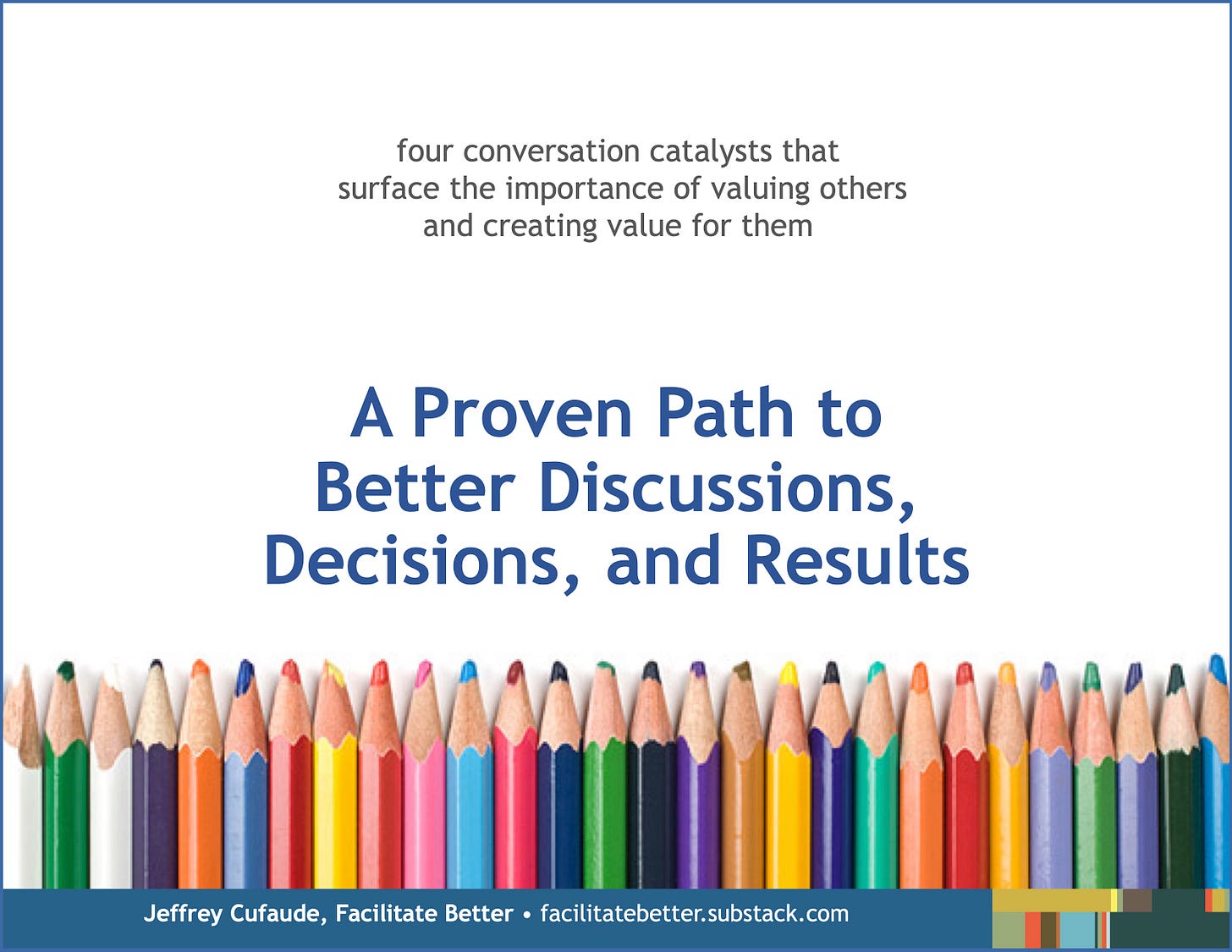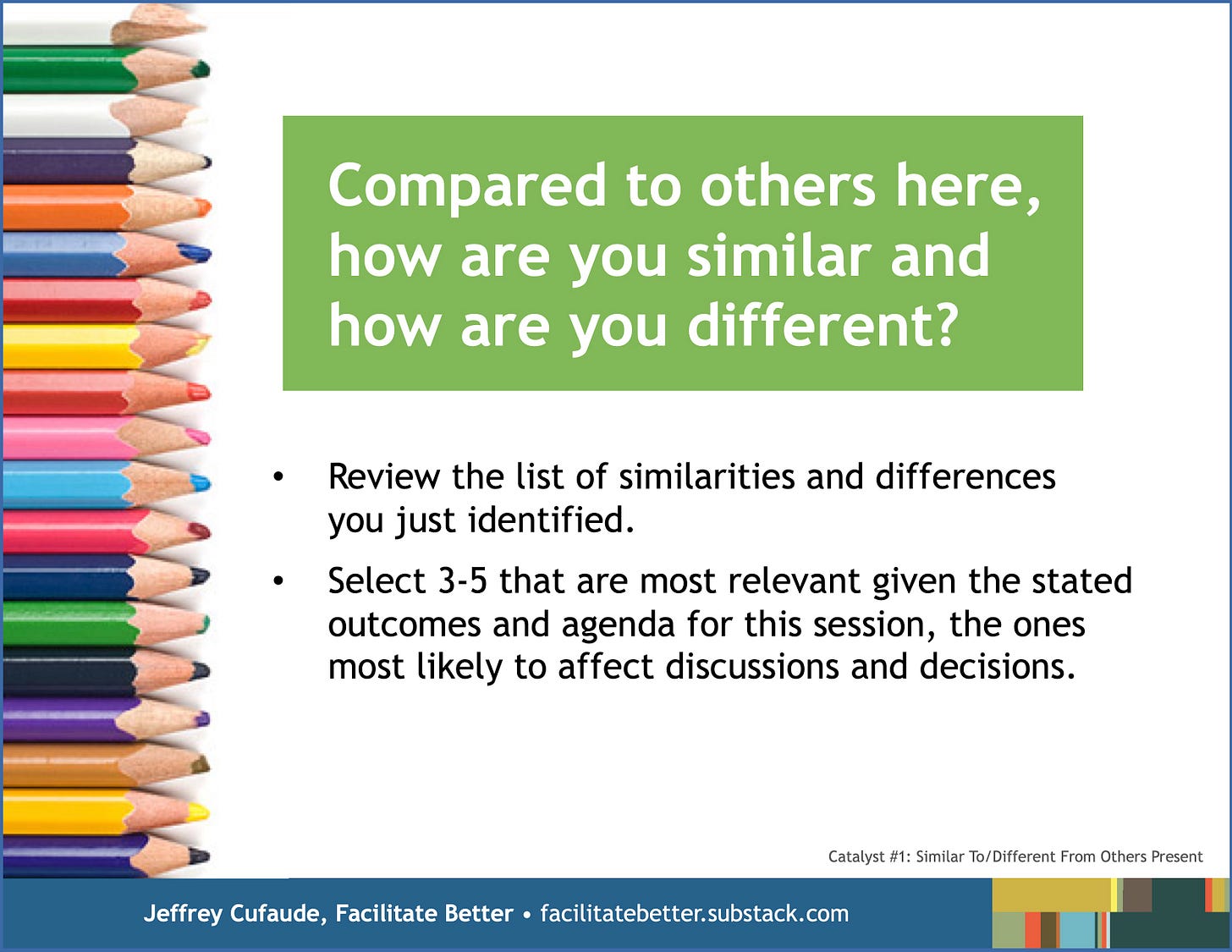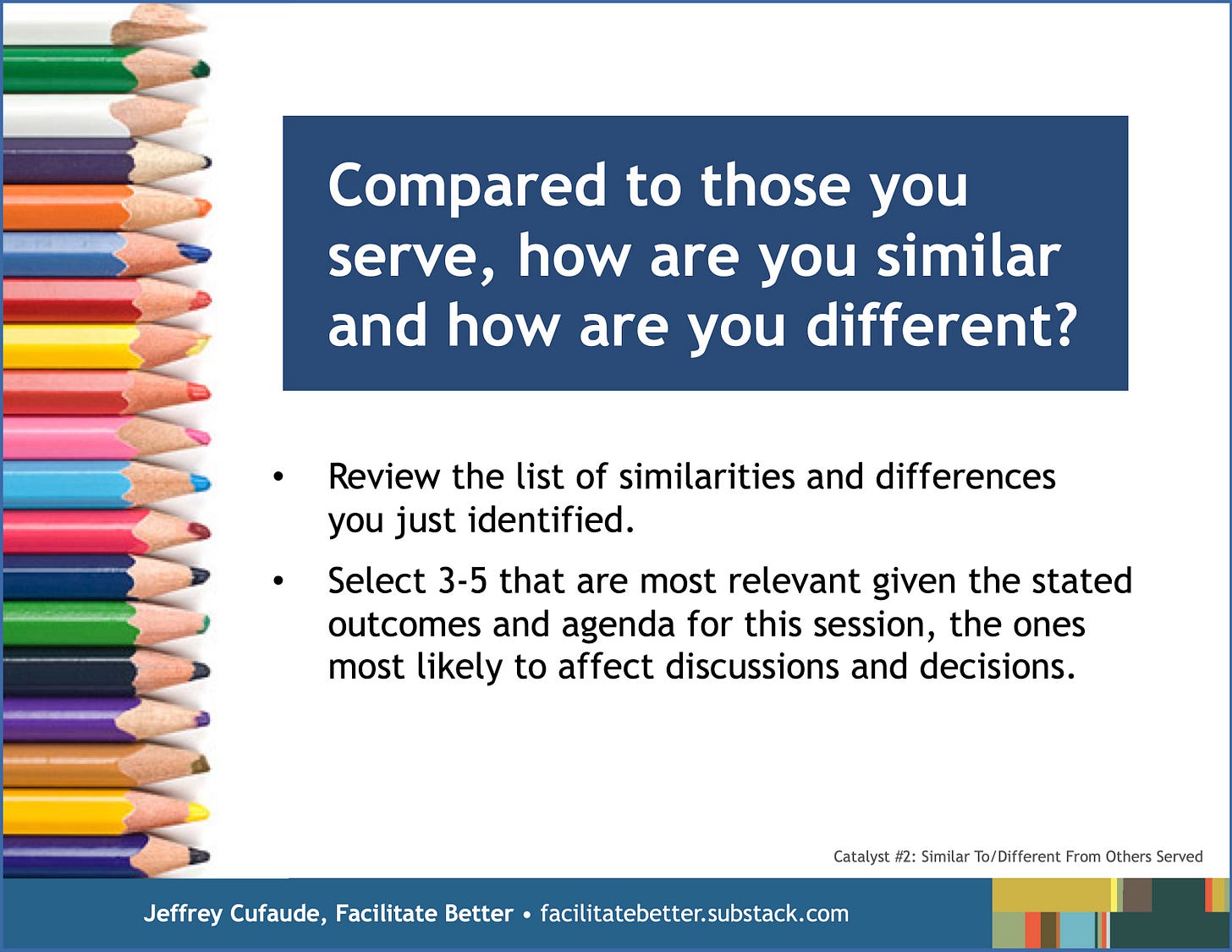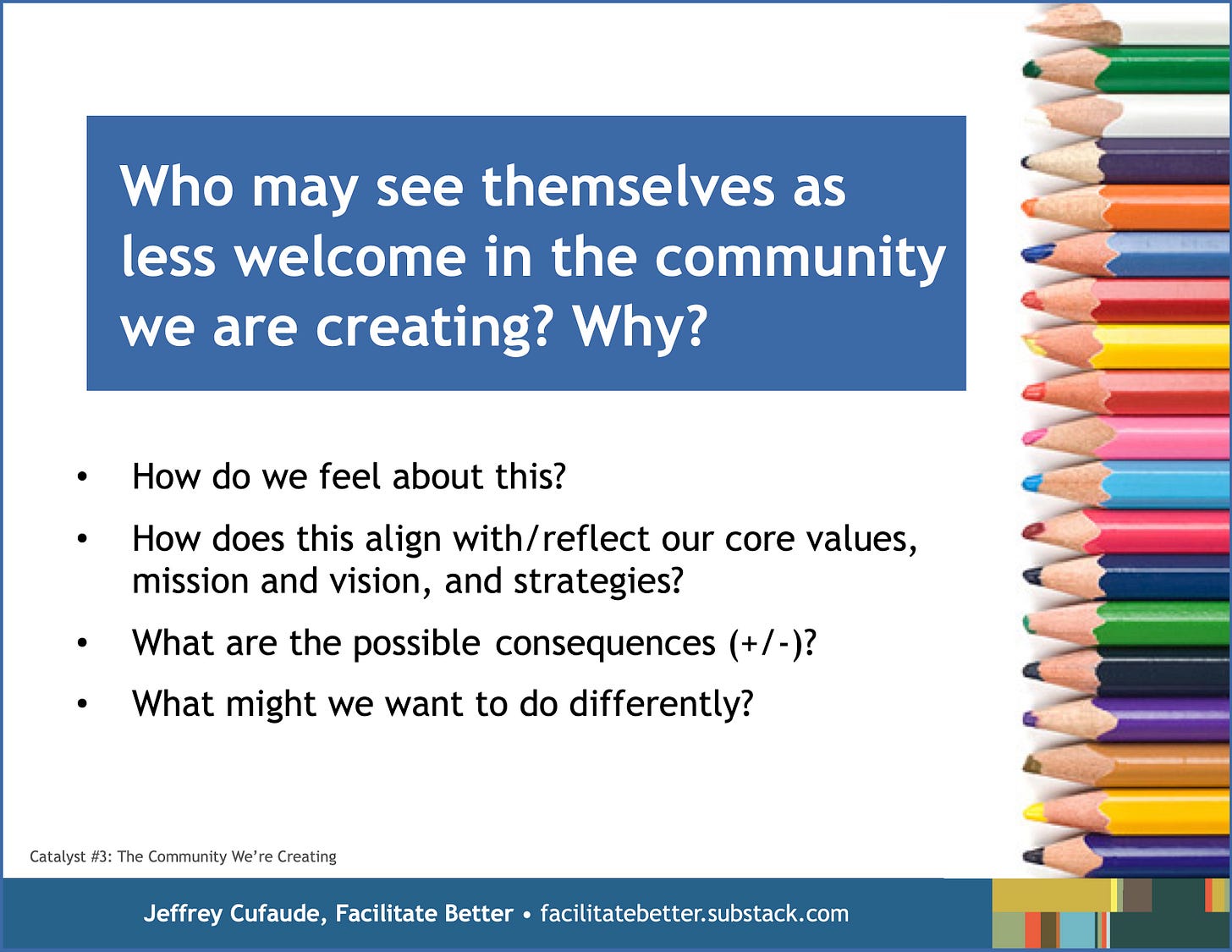A Proven Path to Better Discussions, Decisions, and Results (Facilitation Friday #71)
Four conversation catalysts that surface the importance of valuing others and creating value for them.
“A diverse mix of voices leads to better discussions, decisions, and outcomes for everyone.”
Sundar Pichai, Chief Executive Officer, Alphabet
Not too long ago this observation might not have generated much controversy in many settings. That no longer is the case.
While DEI initiatives may be under fire for their intentions or impact, ample research affirms what Pichai asserts: diversity of participants and perspectives helps produce better results. Here is just a sampling:
“Diversity matters even more: The case for holistic impact” (McKinsey & Company)
“Getting Serious About Diversity: Enough Already About the Business Case” (Harvard Business Review)
“How Diversity Affects Decision-Making in Communities” (Social Pinpoint)
Some facilitator or participants may see diversity, equity, and inclusion as a principled position or moral imperative. Others may acknowledge only the pragmatic aspects of DEI considerations. And some may still question the need for (or value of) diversity, equity, and inclusion despite the research.
So what’s a facilitator to do given that diversity, equity, and inclusion often are a proven path to better discussions, decisions, and results?
It would be facilitator malpractice to not ensure groups consider the mix of:
participants and perspectives most likely to help them achieve their intended outcomes, and
demographics, values, preferences, needs, and aspirations among those for whom they make decisions whether they be members of an association of customers for a company.
My personal approach is not to moralize about the value of diversity, but to have participants discuss relevant information related to the two issues just noted. Some may question the need for such conversations while others may use them as an opportunity to champion DEI overall. Prepare for either to occur.
Four Conversation Catalysts to Raise Relevant Diversity Issues
Let me offer four conversation catalysts/discussion prompts I use to help surface participants’ perspectives related to relevant diversity and inclusion considerations. While not a requirement, I find completing the first and/or second as a primer or icebreaker often enhances discussions and decisions when using the third and/or fourth.
Each catalyst and subsequent discussion can help illustrate the importance of diversity and valuing others for the work participants have convened to complete and/or the relationships in the group, a point I often drive home with the slide above. Participants generally seem to find the questions nonthreatening and purposeful. Even those who are initially skeptical come to appreciate how these conversations matter.
The meeting or workshop outcomes, as well as the existing, if any, relationships among group members, inform which catalysts I include. They also guide how I introduce and debrief the activities.
To better engage both introverts and extroverts, I usually have participants respond to the key question(s) on their own first, either before the session as pre-work or silently noting responses during the session. For any questions done as pre-work, I may share aggregated responses with participants to review prior to any discussion of them.
Below I provide an instruction slide and a brief statement of purpose for each catalyst/question to make it easier for you to incorporate them in your own efforts. You can tailor the questions to suit the purpose and composition of the gathering you are facilitating.
Catalyst #1 • Similar To/Different From Others Present
Purpose: to help participants identify how the similarities and differences among session participants might affect discussions and decisions.
Catalyst #2 • Similar To /Different From Others Served
Purpose: to help participants identify the potential implications of how they are similar to or different from the members or customers they serve (either in general or the audience for a specific program, service, or publication).
Catalyst #3 • The Community We’re Creating
Purpose: to help participants consider who among their member, customer, or stakeholder community(ies) may feel marginalized or less welcome, why that might be, and what actions they may wish to take.
Catalyst #4 • Value or Relevance Considerations
Purpose: to help participants consider which members, customers, or stakeholders might find a specific product, service, et al, less valuable or relevant, why that might be, and what actions they may wish to take.
Note: this question is similar in spirit to the Value/Impact Matrix described in this post on better decision-making, and I often use them in tandem.
Ways To Use These Catalysts
I find the catalysts enhance a variety of discussions and decisions and often use them as:
a primer or icebreaker with a newly formed team or group
part of volunteer onboarding
a warm-up activity for a longer workshop or leadership conference
a precursor with a group prior to reviewing member or customer data and/or discussing the importance of being data-driven
part of a product, program or publication (re)design session
key activities during a strategic planning session
Bottom Line?
Ample research confirms that meeting and workshop results are almost always enhanced by DEI:
Diverse participants and perspectives
Equitable conversations and contributions
Inclusive consideration of data, ideas, and opinion
Better discussions and decisions are not just about valuing others. Participants must embrace that it is about valuing others—and creating value for others—not like them. Effective session design and facilitation can make it easier for them to do so.
Getting in Action
Think about any of the groups or meetings you facilitate. Generate your own responses to Catalyst #1 for one or more of them, identifying how you compare to those you facilitate. Consider how what you surface does (or should) influence your session design and facilitation choices.
For each of the four catalysts, identify a group, meeting, or workshop where you are involved that would benefit from responding to and discussing the question posed and how you might suggest or help them do so.
If any conversation where you’re using one of the catalysts begins to devolve into a debate or charged discussion, how might you respond? Remember that effective facilitation provides group process leadership while generally operating with restraint.
© Facilitate Better and Jeffrey Cufaude. All rights reserved.
To affordably license this content for reprint on your site or in electronic or print communications or to contact me regarding customized facilitation skills workshops or consultations, complete this form.









